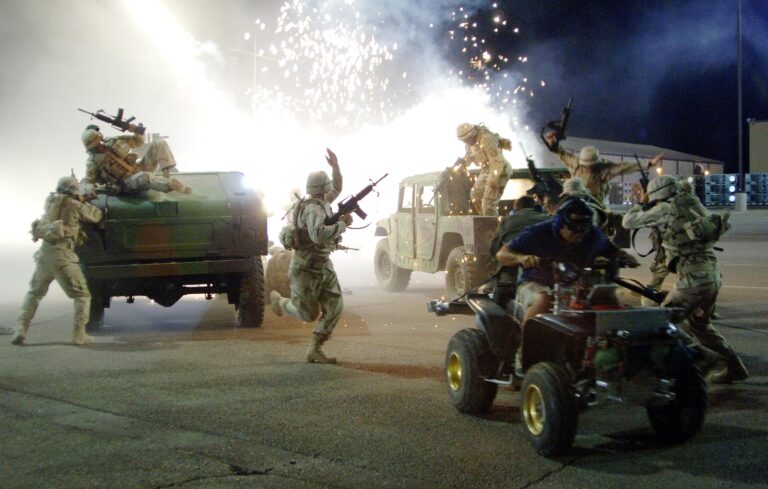How the U.S. Department of Defense Partners with Hollywood to Shape Military Narratives
A Symbiotic Alliance: The DoD and Hollywood Collaboration
The partnership between the U.S. Department of Defense (DoD) and the entertainment industry is a well-established, strategic collaboration that benefits both entities. Through this alliance, filmmakers gain privileged access to military equipment, locations, and expert consultants, enabling them to craft authentic and compelling portrayals of military life. In exchange, the DoD leverages these productions as a platform to influence public opinion, enhance recruitment efforts, and foster national pride. This cooperation is carefully managed to protect sensitive information while maximizing the positive impact of military-themed media.
Primary advantages of this collaboration include:
- Ensuring narrative authenticity with expert military input
- Utilizing real military assets such as aircraft, naval vessels, and uniforms
- Enhancing recruitment and morale through favorable media exposure
- Implementing stringent security reviews to safeguard classified details
| Collaboration Aspect | DoD Contribution | Benefit to Filmmakers |
|---|---|---|
| Technical Expertise | Deploys military advisors and consultants | Boosts on-screen realism and credibility |
| Access to Resources | Provides equipment, vehicles, and filming locations | Enables large-scale, authentic production settings |
| Security Oversight | Reviews scripts to prevent disclosure of sensitive information | Maintains operational secrecy and integrity |
| Recruitment and Public Relations | Supports positive military representation | Increases public engagement and enlistment interest |
Behind the Scenes: The DoD’s Role in Film and Television Production
The DoD’s involvement in Hollywood productions goes far beyond simple consultation. It is a comprehensive process that includes script evaluation, on-set advising, and logistical support. By reviewing early drafts, the DoD ensures that storylines accurately reflect military protocols and avoid compromising national security. Military advisors often work closely with actors and directors to train performances and choreograph realistic combat or operational scenes. Additionally, filmmakers may gain permission to shoot on military bases or use advanced technology, which significantly elevates the production’s authenticity.
Core components of this collaboration encompass:
- Script Review: Early-stage feedback to align narratives with military realities.
- Technical Support: On-site advisors who guide actors and crew in military procedures.
- Facility and Equipment Access: Use of real military installations and hardware.
- Mutual Gains: Authentic storytelling for filmmakers; enhanced public image and recruitment for the DoD.
| Production Phase | DoD Involvement | Filmmaker Advantage |
|---|---|---|
| Story Development | Provides detailed script feedback and approvals | Ensures credible and accurate military narratives |
| Filming and Direction | Offers technical advisors and actor training | Delivers authentic performances and scenes |
| Resource Provision | Grants access to military equipment and locations | Enhances visual authenticity and scale |
Maintaining the Balance: Accuracy Versus Entertainment in Military Depictions
One of the most complex challenges in the DoD-Hollywood partnership is balancing factual accuracy with engaging storytelling. Military-themed films and series wield significant influence over public attitudes toward the armed forces, so the DoD carefully evaluates portrayals to avoid glorifying violence or disseminating misleading information. The department’s involvement ensures that depictions honor the sacrifices and professionalism of service members while preserving the dramatic elements necessary to captivate audiences.
To achieve this equilibrium, the DoD emphasizes several guiding principles during collaboration:
- Authenticity: Ensuring accurate representation of uniforms, tactics, and military language.
- Security: Protecting sensitive operational details and personnel safety.
- Respect: Depicting service members’ dedication and hardships with dignity.
- Creative Freedom: Allowing filmmakers enough latitude to craft compelling narratives.
This approach fosters a cooperative environment where military portrayals are both credible and engaging, resonating with viewers while upholding the integrity of the armed forces.
Guidelines for Filmmakers: Navigating a Successful Partnership with the DoD
For filmmakers aiming to collaborate effectively with the Department of Defense, early and transparent communication is essential. Submitting scripts and production plans well in advance allows the DoD to provide constructive feedback, ensuring accuracy and addressing any security concerns. Flexibility in adapting creative elements to meet military standards without compromising artistic vision is key to a fruitful partnership.
Understanding the DoD’s mission and respecting confidentiality around classified information are critical. Establishing a strong working relationship with assigned military liaisons can streamline communication and approval processes, facilitating smoother production timelines.
| Best Practice | Importance |
|---|---|
| Submit Scripts Early | Allows thorough review and ensures accurate military depiction |
| Adhere to Security Guidelines | Protects sensitive and classified information |
| Maintain Open Communication | Builds trust and expedites approvals |
| Be Open to Creative Adjustments | Balances realism with storytelling needs |
| Work Closely with a Military Liaison | Simplifies coordination and problem-solving |
Conclusion: A Dynamic Partnership Shaping Military Storytelling
The ongoing collaboration between the U.S. Department of Defense and Hollywood exemplifies a strategic alliance that enriches both national security objectives and the entertainment landscape. By granting filmmakers access to authentic military resources and expertise, the DoD ensures that portrayals of the armed forces are credible and respectful. In return, Hollywood productions benefit from enhanced realism and production value, which resonate deeply with audiences. As this partnership continues to evolve, it remains a powerful example of how government agencies and the media can jointly influence public perception and storytelling in contemporary America.




